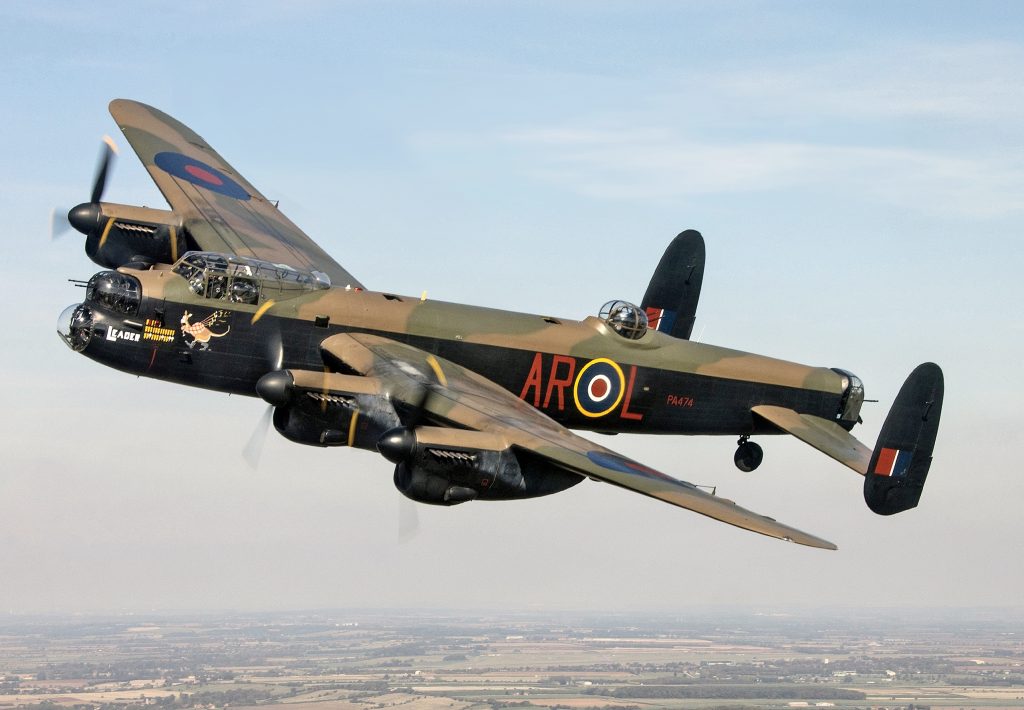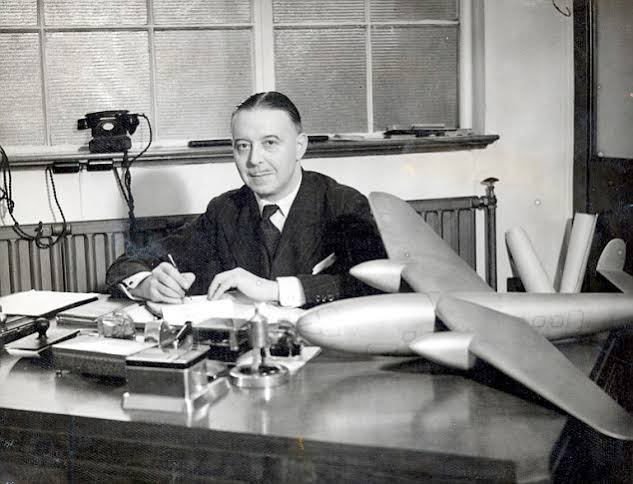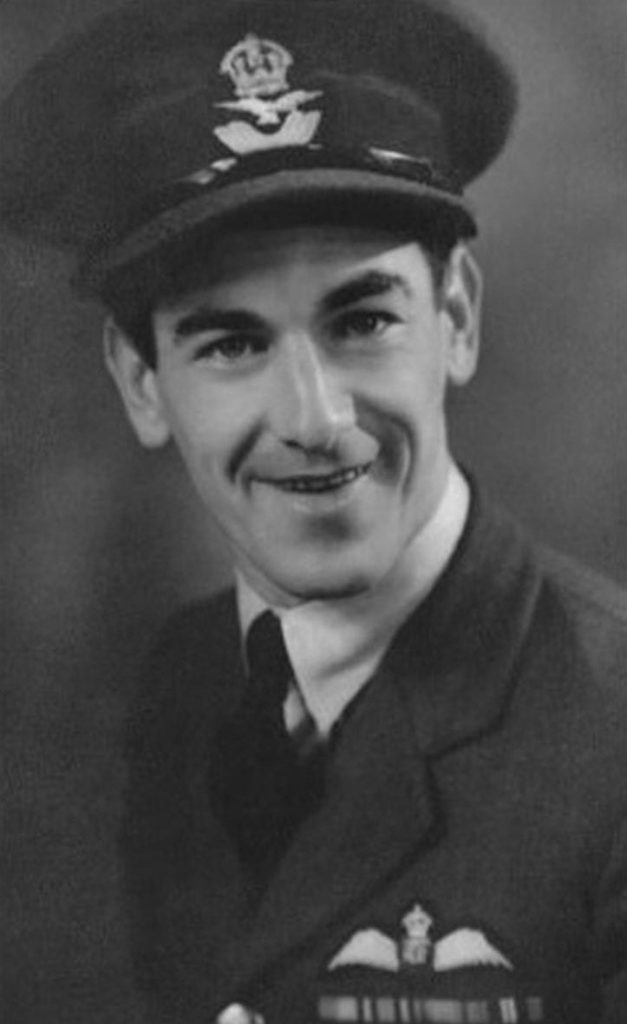The Avro Lancaster is one of the most revered aircraft ever produced and is an icon of British aviation history to this day. Loved by those who flew them, the Lancaster bomber holds a special place in the hearts of millions, both in Britain and abroad. As former WW2 bomber pilot Flight Lieutenant Denis Elliott recounts in our book From Orphan to High-Flyer “It was a lovely plane, and my favourite out of every one that I flew.”

The Lancaster and the men who flew them are synonymous with courage and fighting spirit in the air. To many, this majestic aircraft helped to shatter the seemingly invincible hold that Nazi Germany held over mainland Europe, playing a crucial role in destroying the industrial capacity of Nazi Germany and undoubtably shortened the length of the European theatre of the Second World War. However, the incredible history of this much-loved aircraft is not limited to that chapter of its illustrious history, and its origins lie in an unsuccessful, often forgotten aircraft.
In 1941, with continental Europe under the domination of Nazi Germany, an aircraft was needed that had the ability to not only take the war into Germany herself, but to cripple her industrial output and supply chains. As Winston Churchill said ‘The fighters are our salvation, but the bombers alone provide the means of victory. We must therefore develop the power to carry an ever-increasing volume of explosives to Germany, so as to pulverise the entire industry and scientific structure on which the war effort depends’.
Unfortunately, the first years of war had highlighted the deficiencies in the aircraft that Bomber Command had at its disposal. Twin-engine aircraft like the Handley Page Hampden and Bristol Blenheim were shown to be sorely lacking against the enemy that they were facing. In the case of the Avro Manchester, mechanical issues posed as much of a threat as the enemy. More Manchesters were lost to engine failure than enemy action.
Roy Chadwick (Avro’s Chief Designer) and his team had proposed and created the Manchester; they quickly recognised its faults. Though the Avro Manchester lacked power, often suffered from overheating and suffered from handling problems during flight, it still completed 1,269 sorties before being withdrawn from service in mid-1942. However, all was not in vain, as from the ashes of the Manchester rose the Avro Lancaster.
Even before the Manchester conducted operational flights, Roy Chadwick and his team had begun working on an improved version of the Manchester. The wingspan was increased, and the number of engines was increased to four, with smaller and more reliable Rolls Royce Merlin engines replacing the troublesome 24 cylinder Rolls Royce Vulture engines. Initially, this re-designed aircraft was known as the Manchester MKIII, but prior to the competition of the prototype, its name was changed to the Lancaster.

After an intense period of tests, the Lancaster began operational service, with its first operation flight taking place with 44 Squadron on the night of the 3rd – 4th of March 1942, where four Lancasters laid mines Heligoland Bight, Germany; all four Lancaster safely returned. A daylight operation on the 17th of April to Augsburg, Germany, marked the Lancasters first bombing operation. Twelve Lancasters, six from 44 Squadron, and six from 97 Squadron, took off; only five returned.
It very quickly became apparent that the Lancaster far exceeded the bomber aircraft that had come before it. However, the seven-man crew (pilot, flight engineer, navigator, wireless (radio) operator, bomb aimer/ front gunner, mid-upper gunner, and rear gunner) had to operate in cramped conditions, especially the air gunners, who’s posts were especially restricted. At higher altitudes, temperatures in the gunner’s turrets could drop as low as -40 degrees Celsius.
Throughout 1942, the number of aircraft (including the Lancaster), squadrons and functioning airfields at Bomber Command’s disposal grew. Much of this was down to its new Commander-in-Chief, Arthur Harris. Under his leadership, Bomber Command not only grew in size, but moved away from precision attacks, switching to area bombing.
The result was that during the following three years, Bomber Command transformed into a effective fighting force that brought great devastation and destruction to Germany’s cities, industrial heartlands and supply chains. The role that the Lancaster was significant.
Of all the operations that the Lancaster flew over Germany, none are as famous as the Dambuster Raid, officially known as Operation Chastise.
The targets were three dams in the Ruhr valley, the industrial centre of Germany. 133 aircrew flying 19 specially adapted Lancaster took off on the night of the 16th-17th of May 1943. Using groundbreaking ‘bouncing’ bombs, 617 Squadron managed to breach two out of three dams. Numerous factories, mines, powerplants, agricultural land and other vital links in the German supply chain were destroyed.
However, 617 Squadron paid a high price for their success. In total, eight Lancasters were lost, 53 aircrew were killed and 3 were taken prisoner.
As the European theatre of the Second World War drew to a close in May 1945, Lancasters prepared for operations with Tiger Force, which was to take part in the invasion of Japan, scheduled to begin in late 1945. However, Tiger Force was disbanded after Fat Man and Little Boy were respectively dropped on the Japanese cities of Nagasaki and Hiroshima, which ultimately led to Japan’s surrender.
Despite the conclusion of the Second World War, the Lancaster continued serving with the RAF in various roles, including photographic and maritime duties. However, by the early 1950s, Lancasters were becoming old by aviation standards, and incident rates started to climb. Still, they remained in service with the RAF until 1956.
It was during his post-war service with the RAF that Denis flew over 2,000 hours at the control of Lancasters while stationed in Britain and Malta. He recounted to me how he once defied orders while over the Mediterranean and found a Lancaster crew in a lifeboat, their Lancaster having crashed into the sea under the most shocking of circumstances. Sadly, it wasn’t to be the only such Lancaster incident that impacted Denis’s RAF service. However, by the early 1950s, Lancasters were becoming old by aviation standards, and incident rates started to climb.

The figures surrounding the Lancaster are exceptional. 7,377 were built during the five years it was manufactured. It’s 33ft long bomb bay meant it was also able to carry exceptionally large loads, generally up to 12,000lbs. It could stay in the air with only two working engines, and, incredibly, modified Lancasters were able to carry the 22,000lb Grand Slam bomb. It’s reliability, handling, ability to take battle damage and agility have often been spoken about by the young men who flew them; the average age of a Lancaster crew was only 22.
The Lancaster remains one of Britain’s most iconic and loved aircraft. It’s synonymous with the RAF, and for many, the Lancaster is, alongside the Spitfire, the defining aircraft of the RAF during the Second World War.
Denis’s incredible journey from a beaten orphan to a skilled, brave RAF bomber pilot is truly incredible. Click here to find out more.